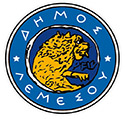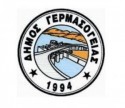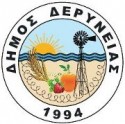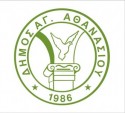 In 2016, the system was more actively used by national authorities, who removed more dangerous products from stores. However, more and more of the dangerous products notified in the Rapid Alert System are sold on online platforms. This is why the Commission has stepped up its cooperation with Amazon, Ebay and Alibaba to tackle more actively potentially unsafe or non-compliant products from their websites which sell to consumers in the EU.
In 2016, the system was more actively used by national authorities, who removed more dangerous products from stores. However, more and more of the dangerous products notified in the Rapid Alert System are sold on online platforms. This is why the Commission has stepped up its cooperation with Amazon, Ebay and Alibaba to tackle more actively potentially unsafe or non-compliant products from their websites which sell to consumers in the EU.
Věra Jourová, Commissioner for Justice, Consumers and Gender Equality said: “Consumers need to be protected from dangerous products. And this protection must apply both online and offline. Therefore I am pleased that we could agree with Amazon, Ebay and Alibaba to join efforts to remove products notified through the Rapid Alert System from their websites, and I call on others to follow suit. I am also satisfied that we have made some progress related to China, with the numbers of dangerous goods imported on the decrease this year. This shows that our cooperation with China and our persistence to demand high standards is paying off.”
The cooperation between EU countries has intensified and they increasingly use the Rapid Alert System to ensure that dangerous products are quickly removed everywhere in Europe. In 2016 there were 2,044 alerts on dangerous products circulated among national authorities through the Rapid Alert System. These alerts prompted 3,824 follow-up actions, such as product recalls. The number of reactions was more than twice as high as the previous years. This shows that national authorities are following up more closely on alerts and taking all necessary measures to make the market a safer place for consumers.
The European Commission has also worked with national authorities to make the system even more user-friendly and the public website has been modernised to encourage its use by companies and consumers.
How does it protect consumers from dangerous products sold online?
Many of the dangerous products notified in the Rapid Alert System are also sold on online platforms or marketplaces, as consumers buy more and more online. In 2016, this was the case for 244 notifications. To address this phenomenon, several Member States have already set up specialised teams to monitor webpages and trace dangerous products that are sold online. In addition, Amazon, eBay and Alibaba have agreed to step up their efforts to remove such products once identified by the EU regulatory authorities. For this purpose, the online market places have set up a single point of contact for the authorities.
Which products are posing the most risks?
In 2016, toys was the most notified product category (26%), followed by motor vehicles (18%), and clothing, textiles and fashion items (13%).
As far as risks are concerned, in 2016, the risk most often notified was injury (25%), followed by the chemical risk (23%).
Where did the dangerous products come from in 2016?
The majority of dangerous products notified in the system came from outside the EU. China was indicated as a country of origin for 53% (1,069) of notified products. There was a 9 percentage point drop in the number of alerts on products from China from 62% in 2015 to 53% in 2016.
Dangerous products of European origin accounted for 468 notifications (23%).
In 2016, 102 notifications (5%) signalled the United States and 53 notifications (2.6%) indicated Turkey as country of origin. For 158 notified products (8%) the origin is unknown.
Next steps
The Commission will continue working on improving the Rapid Alert System to make it even more convenient for the authorities to use on a daily basis.
The European Commission will carry on cooperating with Chinese authorities through exchanges of information on dangerous products on which they take action “at source”, in China.
The Commission will continue working with online marketplace and to ensure they take action against unsafe products. In order to support controls by authorities, the Commission is preparing a practical guidance on the market surveillance of products sold online.
Background
Since 2003, the Rapid Alert system ensures that information about dangerous non-food products withdrawn from the market and/or recalled anywhere in Europe is quickly circulated between Member States and the European Commission. This way, appropriate follow-up action (ban/stop of sales, withdrawal, recall or import rejection by Customs authorities) can be taken everywhere in the EU.
Thirty-one countries (EU together with Iceland, Liechtenstein and Norway) currently participate in the system. The Rapid Alert System functions thanks to daily and continuous close cooperation between Member States.
The Rapid Alert System has a dedicated public website (ec.europa.eu/consumers/rapid-alert-system) which provides access to weekly updates of alerts submitted by the national authorities participating in the system. Every week, around 50 alerts are registered and published on the web. Anyone can consult the notifications in the system. Consumers and businesses can now also create and personalise their own subscriptions to alerts according to their needs and preferences and share alerts through social media.
ANNEX
The case of the Samsung Galaxy Note 7 mobile phone: an example of good practice.
This product had a dangerous battery cell which overheated and ‘exploded’ causing serious burns to consumers. The United Kingdom authorities notified through the Rapid Alert System the measures taken to recall and stop the sale of the product. This triggered an exchange of information inside the system on the number of devices found, the measures taken, the economic operators involved and the number of incidents reported. Although no accident was reported by the authorities, the product was identified as posing a high risk of burns.
For More Information
Rapid alert system for dangerous products 2016 report
Rapid alert system website
Press contacts:
|





